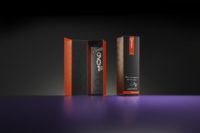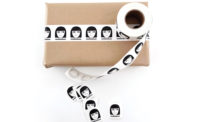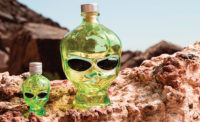One of the ongoing challenges that the packaging and labeling sectors continue to face is the generation of static charges on production lines. The presence of static can result in a number of issues – such as poor print quality, tiny holes that appear in extruded film or blockages in machinery equipment – but dust attraction remains arguably the biggest challenge in a sector concerned with quality control, as airborne particles are attracted to charged surfaces, leading to high reject rates and wastage.
Static arises when an external force causes an electrical charge to move from one material to another, leaving one positively charged and the other negatively charged. Speed and force of the friction, pressure and separation are all factors that contribute to the intensity of the charge, with increased force or faster processes leading to larger charges being generated. If one of the materials is conductive, it won’t hold the charge. But if the material is non-conductive, the charge is unable to move across the surface, creating a static “pool” of electrical charges.
The elimination of static should be a fundamental part of the quality control measures adopted in flexible packaging and labeling. Cleanliness is a critical issue in a wide number of industries – especially food, medical and pharmaceutical. Customer demands constantly increase the required standards, and manufacturers that fail to meet these standards risk losing out to more preemptive competitors in a progressively driven market.
If there is no static control solution in place, issues relating to charged materials are likely to arise. First of all, the presence of static will attract contamination onto the film from machine frames and the process environment, leading to the disposal of tainted products and resulting in high rejection rates. Static can also cause tension and web alignment problems during printing and rewinding processes. Other problems instead raise a number of health and safety issues, such as operator shocks or, when solvent-based inks are adopted, the risk of ignition of flammable gases and substances.
End user demands are seeing more refined and bespoke products than there was a few years ago. Filmic materials, for example, due to their more striking appearance, are used far more now – but have the potential to generate higher static charges. The same can occur on digital label printing lines – in fact, the charge can be massive when generated during both the printing process and as the film or paper is unwound from a roll. This attracts dust within the vicinity to the web surface, compromising the print quality and ultimately the product’s final presentation.
High-speed webs will produce static – couple this with the increased range of substrates now being utilized for labeling and packaging, and there is a significant chance production problems will arise due to contamination. Today’s lines are capable of running at upwards of 1200 feet/min, more complex materials are being developed, and lightweight substrates such as PET, PVC and Mylar are especially susceptible to the effects of this phenomenon.
What’s the Solution?
The prevention and elimination of static charges can be easily achieved by installing ionizing bars that will ensure the material’s surface remains void of any contamination, guaranteeing print quality is maintained and health and safety is observed.
Ionization technology employs high voltage AC or pulsed DC to produce ionized air to neutralize surface charges. The voltage is fed to an array of titanium emitter pins mounted on an ionizing bar, creating a high-energy ion cloud of positive and negative ions. In its AC guise, as the AC cycle changes, positive or negative ions are produced in approximately equal quantities and a statically-charged surface of either polarity passing close to the cloud is quickly neutralized.
Static control bars that have been launched in recent years have seen a change from AC systems to 24V integrated power supplies, providing more efficient ionization. Long range ionizing systems can achieve greater static control for general applications, whereas short and medium applications (with target distances varying between 2 to 20 inches), plug and play bars are better suited. More resilient to the build-up of contamination, today’s anti-static equipment is easier to clean, and with improved shockless design, are safer for operators to handle.
With dust and dirt present on the production line, a web may initially pick up contaminants before going through a static control device – a non-contact web cleaner can be an ideal solution. Capable of removing contamination to below 1 micron, the latest non-contact web cleaning systems designed for the narrow web industry require no consumables and performance is unaffected by contamination levels, so running costs are kept to a minimum.
Staying fully aware of static control developments is essential to any business that produces labels and packaging – installing ionizing bars and web cleaners can ensure they are meeting health and safety standards, have a smooth running supply chain and encounter minimal quality control issues.





